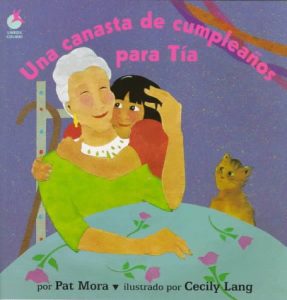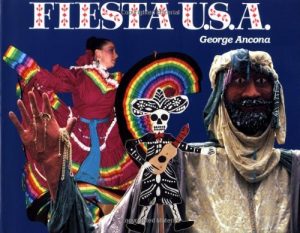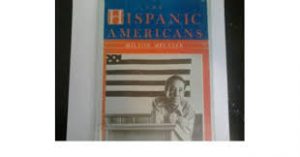 Discusses the social and economic problems faced by twelve million Hispanic Americans who live and work in the United States today.
Discusses the social and economic problems faced by twelve million Hispanic Americans who live and work in the United States today.
Hispanic Americans
Una Canasta De Cumpleaños Para Tía
How Tia Lola Learned To Teach
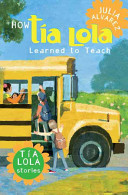
Juanita and Miguel’s great aunt, Tía Lola, comes from the Dominican Republic to help take care of them after their parents divorce, and soon she is so involved in their small Vermont community that when her visa expires, the whole town turns out to support her.
Bolitas De Oro
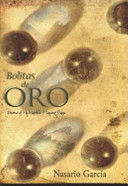
The author of Tiempos Lejanos: Poetic Images from the Past returns to his roots in a new and exciting book of poetry about his childhood in Guadalupe, New Mexcio, originally called Ojo del Padre, presumably in honor of a priest who discovered a still-bubbling spring in the area. The village of Guadalupe is no more, but Garciacute;a’s vibrant word pictures transport us to a time and place of true community and existence. Written first in Spanish, then translated to English, these poems paint his young life and the lives of his family members and neighbors in west central New Mexico in the mid-twentieth century. Garcia’s perceptions of a wider world and all it includes, but still anchored in the routines of home and play and work, were imparted by his mother, who never attended a day of school in her life.
Confetti Girl
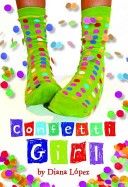
Apolonia “Lina”Flores is a sock enthusiast, a volleyball player, a science lover, and a girl who’s just looking for answers. Even though her house is crammed full of books (her dad’s a bibliophile), she’s having trouble figuring out some very big questions, like why her dad seems to care about books more than her, why her best friend’s divorced mom is obsessed with making cascarones (hollowed eggshells filled with colorful confetti), and, most of all, why her mom died last year. Like colors in cascarones, Lina’s life is a rainbow of people, interests, and unexpected changes.In her first novel for young readers, Diana López creates a clever and honest story about a young Latina girl navigating growing pains in her South Texan city.
Rudy’s Memory Walk
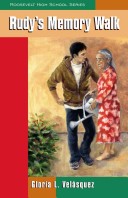
As high school senior Rudy adjusts his attitudes toward the elderly when his senile grandmother has to move in with his family, his girlfriend encourages him to talk with a friend’s mother who has similar problems with her own mother.
Estrellas Peregrinas / Walking Stars: Cuentos De Magia Y Poder / Magic And Power Stories
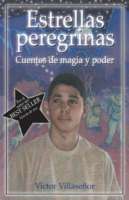
First ever Spanish-language edition of the critically acclaimed collection of short stories for young adults by a master of Latino literature “We’re all walking stars,” the eighty-four year old guide tells Victor Villaseñor as he travels to his mother’s birthplace, La Lluvia de Oro. “Don’t you know what we all are? We are all stars that come from the heavens.” In Estrellas peregrinas, the Spanish-language edition of his critically acclaimed collection of short stories for young adults, Villaseñor shares that enchanted world with the reader. Magic rains down from the heavens like stars, coating each of the family stories in a sheen of la vida as it should be: filled with power and surprises that give each character the strength to endure. The stories brim with a cast of extraordinary characters in challenging situations: the young girl on her first day of school who shows bravery even in the face of school-yard taunts . . . a young man about to be hanged that can only be saved by the miracle of song . . . and the young boy who faces El Diablo in a dark peach orchard. Through it all, the characters truly show themselves to be walking stars, tiny luminous sparks of light, and they are able to affect change in their lives and the world around them by relying on their bravery, their strength, and their faith in themselves. These are the stories of ancestors long-past, stories that will scrape off the dust of modernity on the reader’s skin to show the glowing beings that Villaseñor and his family believe we once were and can still be.
Iguanas In The Snow / Iguanas En La Nieve: And Other Winter Poems / Y Otros Poemas De Invierno
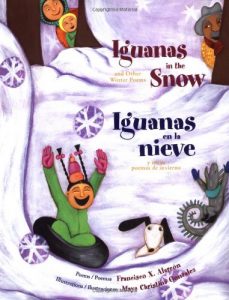 This collection invites us to celebrate winter — by the seashore, in the city of San Francisco, and in the ancient redwood forests of the Sierras. We see a city where people have become bridges to each other and children sing in two languages. A family frolic in the snow reminds the poet of the iguanas playing by his grandmother’s house in Mexico. The seedling redwoods promise tomorrow. Maya Christina Gonzalez creates a spirited family of children and adults making their way through lively settings.
This collection invites us to celebrate winter — by the seashore, in the city of San Francisco, and in the ancient redwood forests of the Sierras. We see a city where people have become bridges to each other and children sing in two languages. A family frolic in the snow reminds the poet of the iguanas playing by his grandmother’s house in Mexico. The seedling redwoods promise tomorrow. Maya Christina Gonzalez creates a spirited family of children and adults making their way through lively settings.
Fiesta U.S.A.
Birthday In The Barrio/Cumpleanos En El Barrio
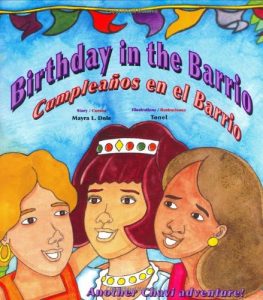 In this second bilingual book by author Mayra L. Dole, lively, determined Chavi sets off on yet another Miami adventure. This time it’s a fifteenth birthday party for her buddy Rosario’s sister that sends her swooshing through her Cuban American neighborhood, recruiting children and grownups to help in the planning and cooking. Once again Chavi proves that she can bring an entire community together for a heartfelt and ultimately very special event.Mayra L. Dole’s bouncy prose and Tonel’s bright, witty watercolors will delight readers who know and love Chavi, as well as those who are discovering this amazing eight-year-old heroine for the first time.
In this second bilingual book by author Mayra L. Dole, lively, determined Chavi sets off on yet another Miami adventure. This time it’s a fifteenth birthday party for her buddy Rosario’s sister that sends her swooshing through her Cuban American neighborhood, recruiting children and grownups to help in the planning and cooking. Once again Chavi proves that she can bring an entire community together for a heartfelt and ultimately very special event.Mayra L. Dole’s bouncy prose and Tonel’s bright, witty watercolors will delight readers who know and love Chavi, as well as those who are discovering this amazing eight-year-old heroine for the first time.

